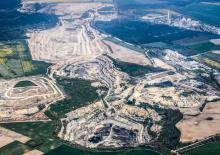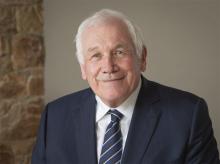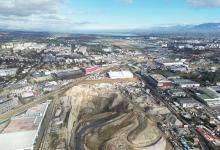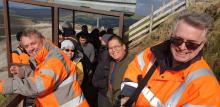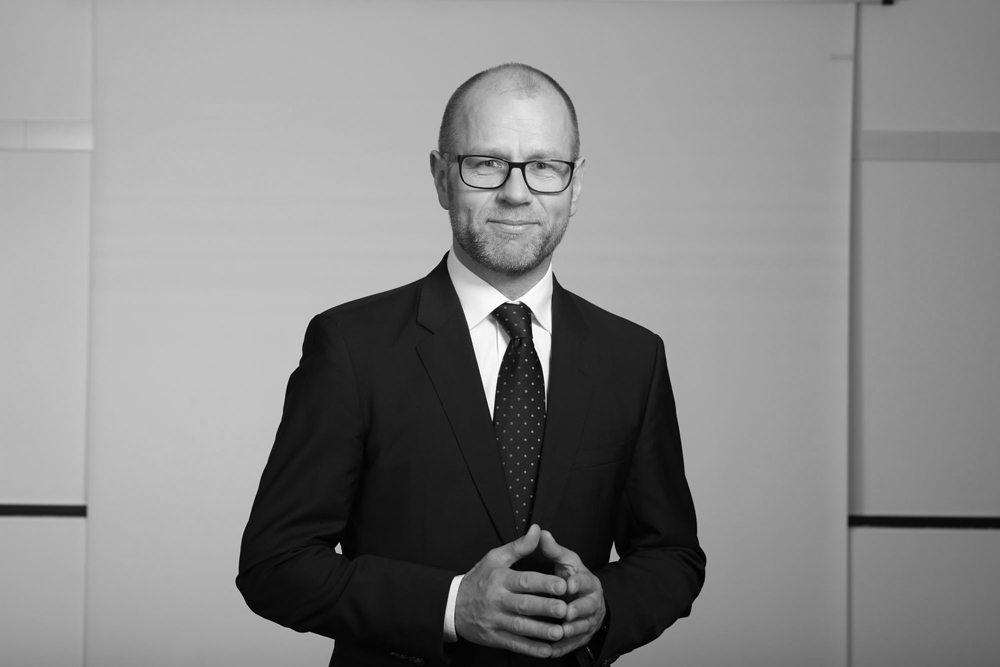
A keen runner who has already completed the Boston, Tromso and Berlin marathons and plans to tackle the London, New York, Chicago and Tokyo marathons in the next couple of years, Krzysztof Suchorz is up between 5am and 6am most days to go for a run prior to his drive to work to his senior management role at Lafarge in Poland.
“Running helps my focus a lot. It gives you a lot of time to think and it prepares me for my working day. Completing a marathon is an achievement that gives you self-confidence,” says Suchorz, speaking to Aggregates Business Europe magazine at Lafarge’s huge Kujawy limestone quarry, near Inowrocław, an industrial city in north-central Poland.
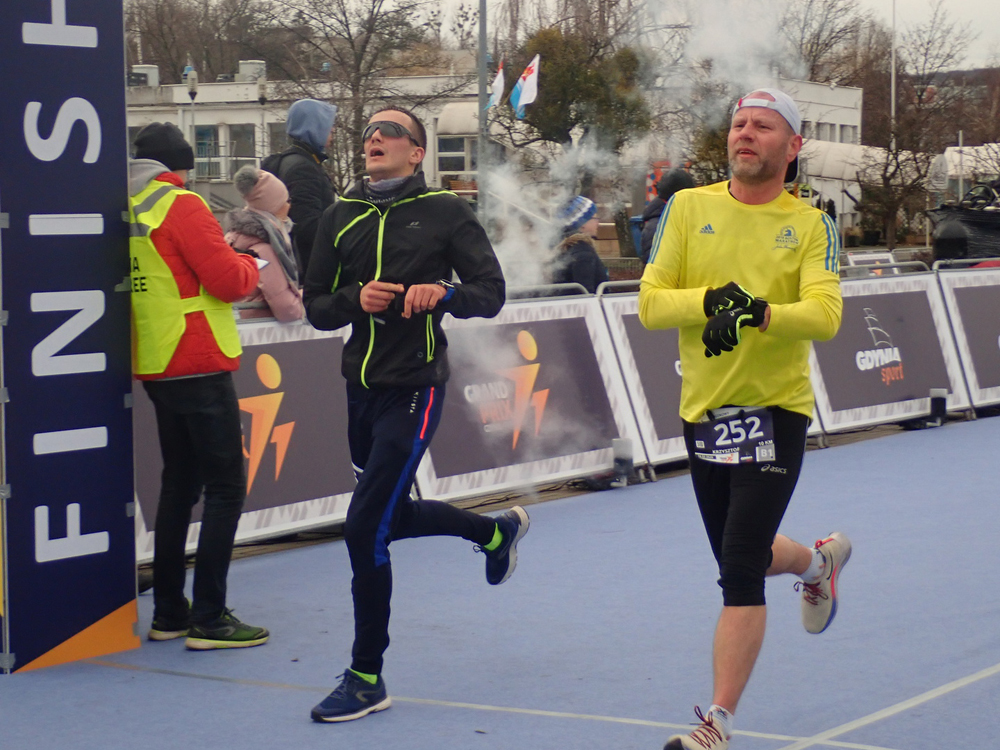
Originally from the northern Poland coastal city of Gdansk, 51-year-old Suchorz has had plenty of positive things to think about on his morning runs during the last two years, as strong building materials demand in Poland has translated into encouraging national sales for Lafarge.
Lafarge, now itself half of French-Swiss global heavyweight LafargeHolcim, began operating in Poland in 1995. Currently Poland’s second-largest cement producer, the company has around 50 facilities in the country. These include 30 concrete-production sites, 14 active quarries, two large cement plants, a marine import terminal and three rail sidings, the latter connecting quarries with building materials supply to major Polish cities. Employing around 1,500 staff in Poland plus a significant number of contractors and their employees, Lafarge has a 21.8% market share of the Polish cement market. The firm also has a 10-12% share of the national aggregates market, and an 8% share of Polish concrete product sales.
“Building material demand strongly depends on economic cycles. Over the last two years Poland has seen stable growth leading to a four per cent rise in GDP [gross domestic product] in both years. This has led to continued expansion of residential, commercial and infrastructure development,” explains Suchorz. “The next EU budget will provide further financial support for infrastructure projects in countries including Poland. This will help fund big projects such as the A2 motorway, east of Warsaw, the S5 expressway connecting Bydgoszcz and Poznan, in western Poland, and the western extension of the S6 Tri-city bypass connecting Gdansk, Sopot and Gdynia with Lębork. I hope the coronavirus will not halt their implementation.
“We expect Polish aggregates demand to remain strong until 2022, with a slight decrease of around five-10 million tonnes after that. Annual aggregates demand in Poland will then stabilise at around 165 million tonnes. There will still be a lot of more local roads to be built and some ongoing big railways projects requiring building materials will also continue.”
Asked how Lafarge stands out from its Polish market competitors, Suchorz says the company was seeking to be a “truly trusted adviser” and “innovative in what is quite a conservative industry”. He says this means the firm needs to deliver its products and solutions better, faster and more efficiently to its customers.
“In 2017, we started the LafargeHolcim Engineering Company (LHE) in Poland to better serve infrastructure sectors. It offers complete services, from design to construction and repairs. It’s delivering our products and concrete solutions to the country’s biggest infrastructure projects. LafargeHolcim operations in other countries are interested in LHE’s development and success.”
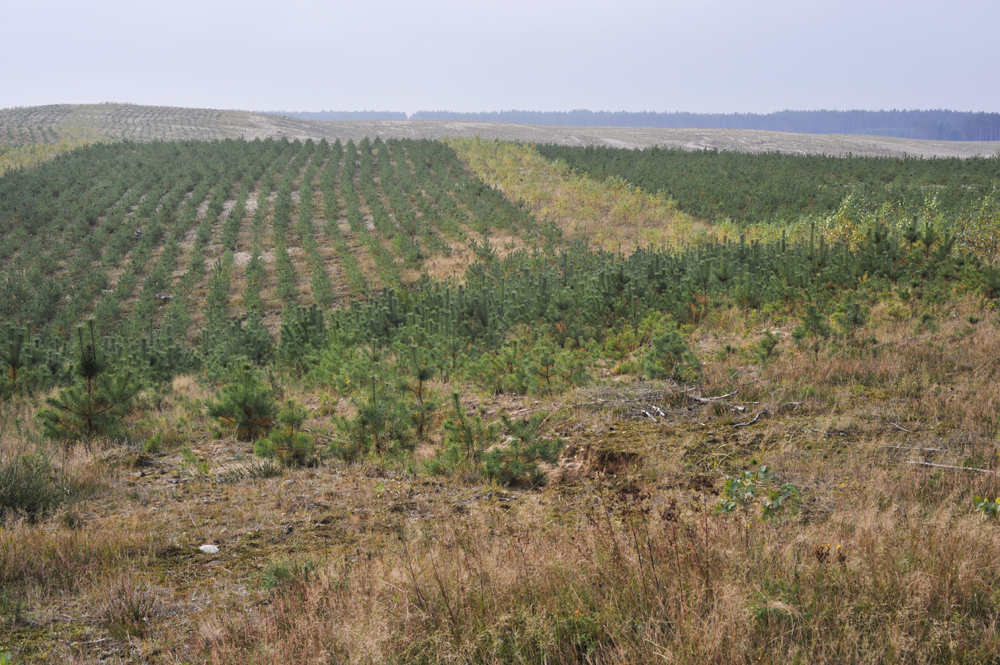
Focusing on Lafarge’s popular product range for Polish customers, Suchorz says: “Our cement quality is homogenous and reputable. Last year, we launched iX, a special screed material. It is selling quite well among our network of building material wholesalers and do-it-yourselfers. We want to reduce our carbon footprint in our products. We are implementing a lot of new things on the concrete side of our business. We are finishing the development phase of our new low CO2 concrete, which will be produced at our plants in Poland. This year, we are also launching Airium, a very light cement-based mineral foam that is ideal for top tile insulation. It has been developed at the LafargeHolcim technical centre in Lyon, France. This is part of our sustainable development strategy.
“We have a full portfolio of in-spec aggregate material products. We offer sand, regular and hard gravel, dolomite, and basalt-based products sourced from our quarries. We also import granite from Scotland and other material from Ukraine. Our fastest sales-growing aggregate is our ground carbonate calcium (GCC) which is used in roadbuilding and agriculture applications.”
Suchorz says Lafarge also develops products for the Polish chemical and agricultural industries such as limestone filler and fertiliser. Limestone fertiliser is widely used in the agriculture sector for soil treatment after harvesting. The Polish government has started paying farmers to use limestone fertiliser and it has become Lafarge’s fastest-growing Polish sales product, with more than 500,000 tonnes sold last year. The company has just received its GMP+ (good manufacturing practices) certification for its limestone filler to be sold as a blend for animal feed. The very strict certification procedure meant the firm had to make a couple of adjustments to its production plants to enable it to increase production of limestone filler and fertiliser.
“My aim is to increase the percentage of our constantly-in-need product range, such as our limestone filler and fertiliser,” explains Suchorz. “This will ensure we have a more sustainable business, one that is not dependent on the fluctuations of the construction and infrastructure project markets.”
Suchorz highlights that environmental protection is a major consideration in all Lafarge’s Polish working practices. Alternative fuel sources account for 80% of all energy used in most of the company’s cement production, and up to 90% of energy used in Kujawy’s state-of-the-art cement plant. The firm collects thousands of tonnes of municipal waste and recycles it to use as energy to power its various sites.
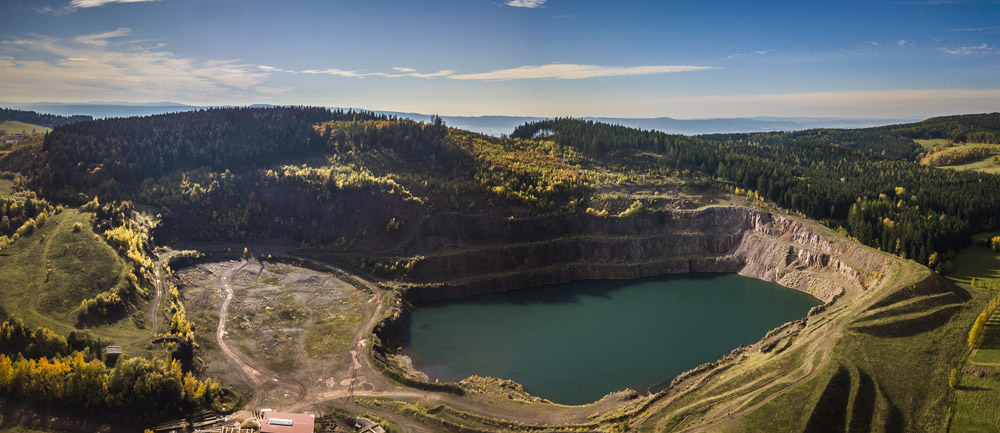
Suchorz notes that in the one-year period of 2017-2018 alone, Lafarge returned more than 200 hectares of Polish quarried land back to farming use and forestry. During 25 years in Poland, the company has already restored 1,102 hectares. These practices, he explains, help ensure that Lafarge’s Poland operations have the minimum impact on the area surrounding each of the company’s facilities.
“We use 60-65 hectares of land for our gravel production operations every year and aim to give back the same amount. We have a very good relationship with the agricultural industry as we have been rehabilitating used gravel deposits for years. In some instances, we have worked on hilly gravel-reach land and been able to return it flattened and much more suited to farming cultivation.
“Last year, we completed a state-of-the-art rehabilitation of an old quarry deposit at our 2.3 million tonnes a year Radkowice dolomite quarry in south-east Poland. We stopped pumping water out and created a very nice 28-hectare lake, under strict supervision of local mining authorities. We have also planted more than 4,000 trees in the lake’s surroundings.
“We also helped turn an old quarry deposit here at Kujawy into a big diving centre. The diving centre opened in 2011 and people come from all over Poland as it has 15 metres of visibility. It remains a unique site in Poland.”
Suchorz says demonstrating environmental best practice also helps Lafarge secure further contracts in Poland. “Two weeks ago, for example, we won the tender to use 208 hectares of a forest near Sepólno Quarry (Sepólno) in northern Poland as a gravel pit for the next 15 years. It shows the strong and trusting relationship we have built with the forestry authorities.
“Climate change and sustainability will further change the way companies like ours operate, as will AI [artificial intelligence]. That will lead to greater use of autonomous machines in areas with the greatest health and safety risk to workers.
“We want to use more and more recycled material in not only our sub-base products but also our concrete. There is a target in Poland for at least five per cent of aggregates products produced each year to be recycled aggregates by 2030. I also think that more building materials production levies across Europe and further afield will also grow and be more common. This means that recycled material will need to be used more and more.”
Lafarge has a long history of investing in premium quarry machine fleets. In Poland, this enables the company to optimise production and efficiency at each of its Polish facilities and gain high-level machine-servicing support.
“At Kujawy, we have just invested in a new Caterpillar 988K XE [high-efficiency electric drive] wheeled loader as part of our environmental protection commitment,” says Suchorz. “The purchase came after I sent three of our wheeled loader operators to the UK to operate this machine in a quarry, as I was really keen to buy these kind of hybrid machines for our operators. They use seven litres less fuel an hour compared to a traditional wheeled loader model. When you equate it to daily working hours, it works out as a lot of money saved if you introduce these kinds of wheeled loaders to all our site fleets.
“Last year for our gravel pit at Sepólno we built a 2.5-kilometre high-speed conveyor connecting our existing deposit to our processing plants. Before that, we had been using hauling trucks to take the material to the plants. The new conveyor is good for the local environment and will save us the cost of 128,000 litres of fuel a year.”
Suchorz says machine-operating systems from Caterpillar, such as ProductLink and VisionLink, and those offered by other top-tier manufacturers are now basic work tools for Lafarge in Poland. He and his management colleagues in Lafarge’s Polish business do not find it a complicated process to access machine data and analyse it. The company also uses drone-based technology at its quarries via its own geological services division to help manage stockpile inventory and flag up any issues on an operating site, such as uneven haul roads.
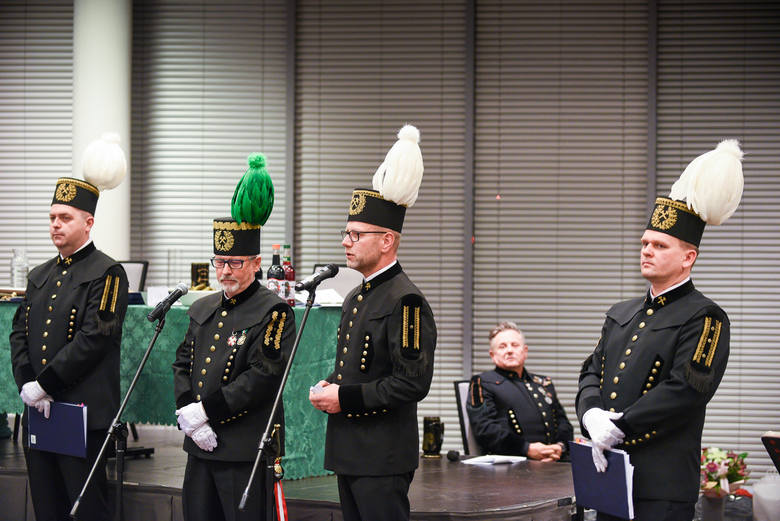
Suchorz is also keen to emphasise the importance Lafarge’s Polish business places in training its machine operators and maintaining high operator standards.
A former manager at UK-headquartered building materials suppliers Foster Yeoman Limited and Aggregate Industries, establishing and developing for the former highly successful businesses in Poland and Latvia, Suchorz took up his senior roles at Lafarge in 2016, following the Lafarge Holcim mega-merger.
“When I started in this industry in the mid-1990s I remember having to work as a one-man band. At times I was operating a
Cat 950F2 loading machine in my suit after coming back from customer sales visits. Now I am in management and have in the aggregates element alone of Lafarge in Poland around 550 people working in the team.”
Commenting on his leadership style and future goals, Suchorz says: “I think it is important to build up your team, encourage cooperation and identify your successors. I aim to instil an entrepreneurial spirit and get my team to always think what is best for the company. As Steve Jobs [Apple co-founder] said: ‘It doesn’t make sense to hire smart people and tell them what to do; we hire smart people so they can tell us what to do.
“I also want to maintain Lafarge’s Poland market growth through innovation and expanding our existing footprint through bolt-on acquisitions for our aggregates and ready-mixed concrete operations.
“There has been a new approach to infrastructure projects in Poland in recent years that encourages the use of single
design-build-operate contractors who use new building materials and solutions. This places all the responsibility on contractors but also offers big commercial opportunities. As such, we are encouraging our customers to use more and more of our innovative products and services.”
For marathon man Suchorz, there is more distance left to run before Lafarge reaches its full Polish market potential.

